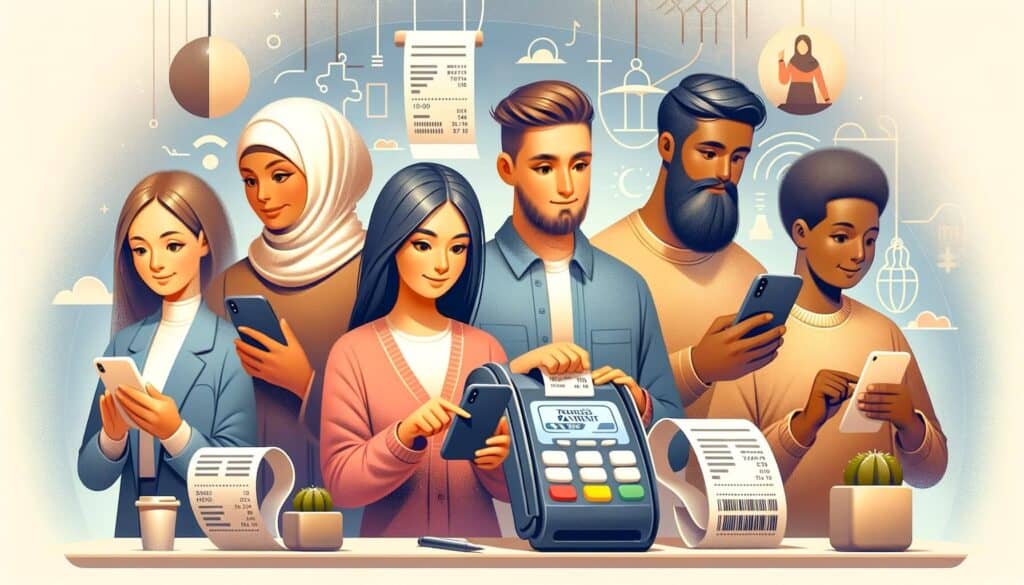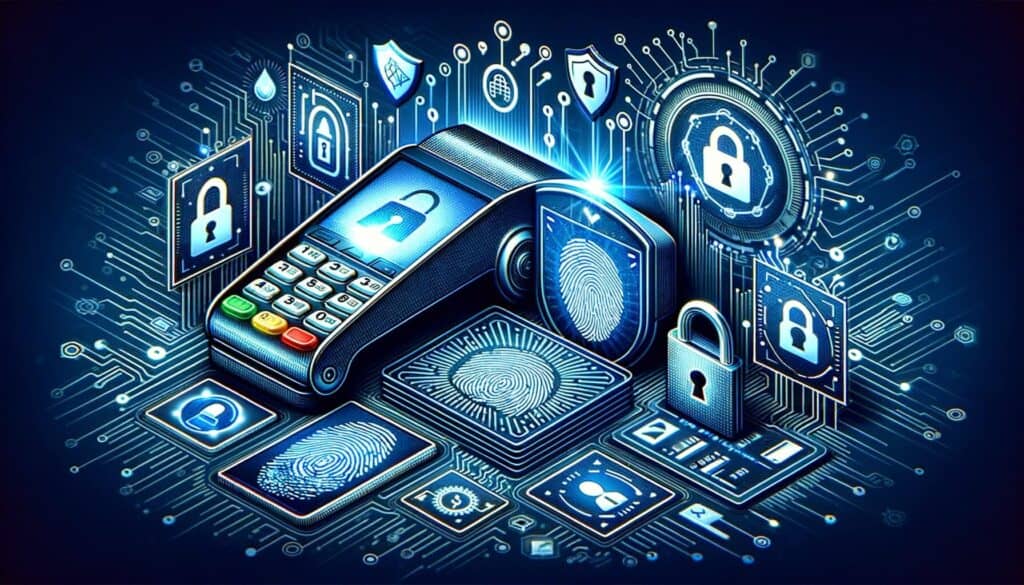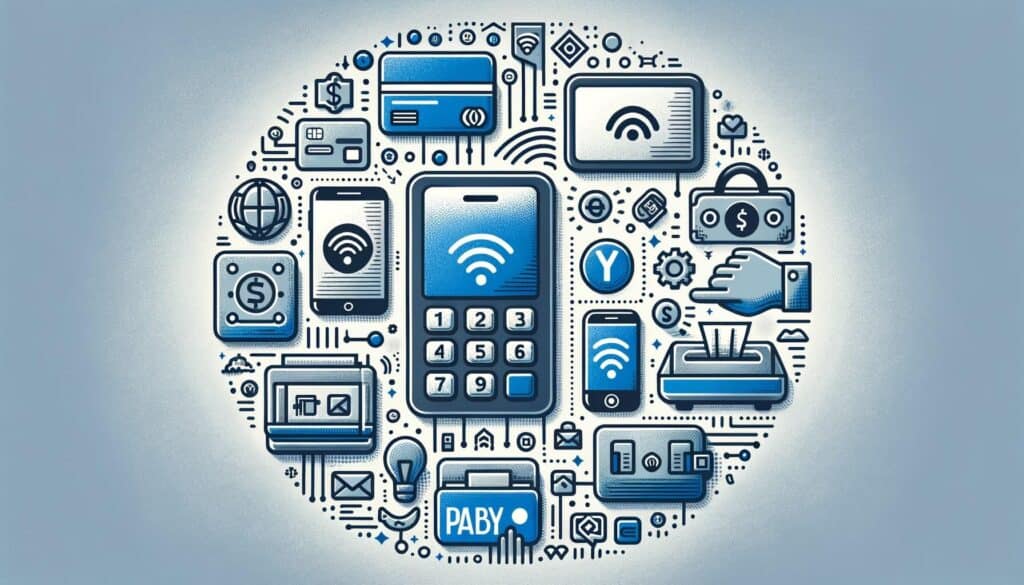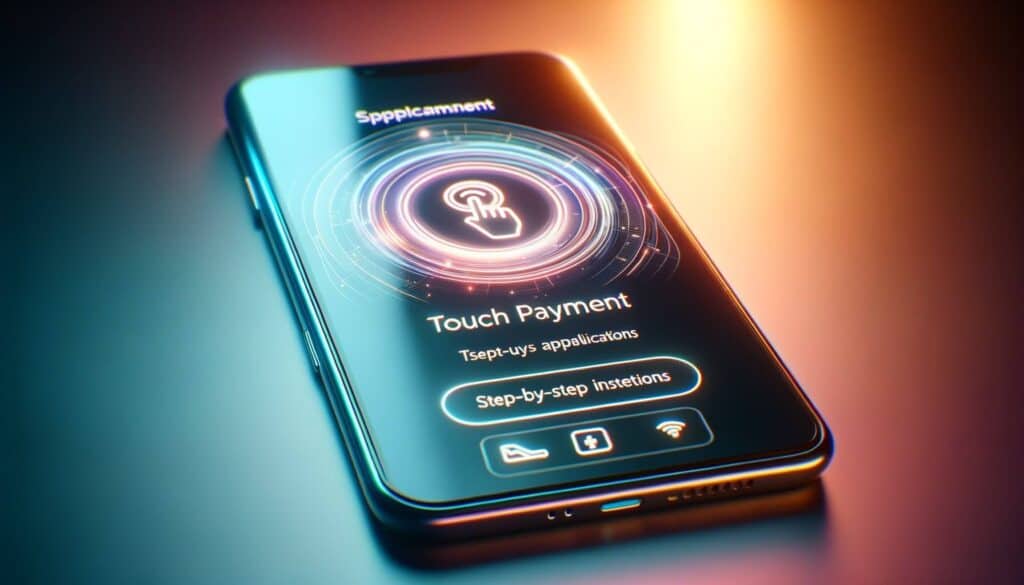
By Harriet Forster January 16, 2025
Touch to Pay technology, also known as contactless payment or tap-and-go, is a convenient and secure method of making payments using a mobile device or a contactless card. This technology has gained significant popularity in recent years, revolutionizing the way we make transactions.
With just a simple tap or wave of your device, you can complete a payment quickly and effortlessly, eliminating the need for physical cash or card swiping.
How Does Touch to Pay Work?
Touch to Pay technology utilizes near field communication (NFC) technology, which allows two devices to communicate wirelessly when they are in close proximity. In the case of touch-to-pay, this communication occurs between your mobile device or contactless card and the payment terminal. When you tap or wave your device near the terminal, the NFC chip in your device emits a radio frequency signal that is picked up by the terminal. This signal contains the necessary information to complete the transaction, such as your payment details and the amount to be paid.
Once the terminal receives this information, it securely processes the payment and deducts the amount from your linked bank account or credit card. The entire process is completed within seconds, providing a seamless and efficient payment experience.
Benefits of Touch to Pay

Touch to Pay offers numerous benefits that have contributed to its widespread adoption. Firstly, it provides convenience and speed. With just a simple tap, you can complete a payment without the need to fumble for cash or enter your card details manually. This saves time and eliminates the hassle of carrying physical wallets or purses.
Additionally, touch-to-pay is highly secure. The technology utilizes encryption and tokenization techniques to protect your payment information. Unlike traditional card payments, where your card details can be easily skimmed or stolen, touch to pay transactions are encrypted and do not expose your sensitive information to potential fraudsters.
Furthermore, touch-to-pay is widely accepted. Many merchants and businesses have adopted this technology, making it easier for consumers to make payments using their preferred method. From grocery stores to restaurants, public transportation to vending machines, touch to pay is becoming increasingly prevalent in various industries.
Security Measures in Touch to Pay Systems

One of the primary concerns when it comes to touch to pay technology is security. However, touch-to-pay systems have implemented robust security measures to protect users’ financial information. These security measures include:
1. Encryption: Touch to pay transactions are encrypted, meaning that the payment information is converted into a code that can only be deciphered by authorized parties. This ensures that even if the transaction data is intercepted, it cannot be read or used by unauthorized individuals.
2. Tokenization: Touch to pay systems use tokenization, which replaces sensitive payment information with a unique token. This token is used for the transaction, while the actual payment details are securely stored in a separate system. This adds an extra layer of security, as even if the token is intercepted, it cannot be used to access the original payment information.
3. Two-factor authentication: Some touch-to-pay systems require additional authentication methods, such as a fingerprint or facial recognition, to authorize a transaction. This provides an extra level of security, ensuring that only the authorized user can make payments using their device.
4. Fraud monitoring: Touch to pay systems employ advanced fraud monitoring techniques to detect and prevent fraudulent transactions. These systems analyze transaction patterns and behavior to identify any suspicious activity and take appropriate action to protect users’ accounts.
Popular Touch to Pay Services and Providers

Several touch to pay services and providers have emerged in the market, offering users a variety of options to make contactless payments. Some of the most popular touch-to-pay services include:
1. Apple Pay: Apple Pay is a mobile payment and digital wallet service offered by Apple. It allows users to make payments using their iPhone, Apple Watch, or iPad at participating merchants. Apple Pay is widely accepted and supports various credit and debit cards.
2. Google Pay: Google Pay, formerly known as Android Pay, is a mobile payment platform developed by Google. It enables users to make payments using their Android devices at supported merchants. Google Pay supports a wide range of credit and debit cards.
3. Samsung Pay: Samsung Pay is a mobile payment service provided by Samsung. It allows users to make payments using their Samsung devices, including smartphones and smartwatches. Samsung Pay supports both NFC and magnetic secure transmission (MST) technology, making it compatible with a broader range of payment terminals.
4. PayPal: PayPal is a popular online payment platform that also offers touch-to-pay functionality. Users can link their PayPal account to their mobile device or contactless card and make payments at supported merchants. PayPal is widely accepted and offers additional features such as buyer protection and rewards programs.
Setting Up Touch to Pay on Your Device

Setting up touch to pay on your device is a straightforward process. The exact steps may vary depending on the service or device you are using, but the general process involves the following:
1. Download the app: If you are using a mobile payment service like Apple Pay, Google Pay, or Samsung Pay, you will need to download the respective app from the app store on your device.
2. Add your payment method: Once you have the app installed, you will need to add your payment method. This typically involves linking your credit or debit card to the app. Some services may also allow you to add gift cards or loyalty cards.
3. Verify your card: To ensure security, most touch-to-pay services require you to verify your card. This can be done by entering the card details manually or by following the verification process provided by the service.
4. Set up additional security features: Depending on the service and device, you may have the option to set up additional security features such as fingerprint or facial recognition authentication. These features add an extra layer of security to your touch to pay transactions.
Using Touch to Pay for Online and In-store Purchases
Touch to pay can be used for both online and in-store purchases, providing a seamless payment experience across various platforms. Here’s how you can use touch-to-pay for each type of purchase:
1. In-store purchases: To make an in-store purchase using touch to pay, simply look for the contactless payment symbol or the NFC logo at the payment terminal. When prompted, unlock your device and hold it near the terminal. The NFC chip in your device will communicate with the terminal, and the payment will be processed within seconds. Some terminals may require you to authenticate the transaction using your fingerprint or facial recognition.
2. Online purchases: Touch to pay can also be used for online purchases. When checking out on a supported website or app, look for the touch-to-pay option. Select it, and your device will prompt you to authenticate the transaction using your fingerprint or facial recognition. Once authenticated, the payment will be processed, and the transaction will be completed.
Future Trends and Innovations in Touch to Pay
Touch to pay technology is continuously evolving, and several future trends and innovations are expected to shape its development. Some of the key trends and innovations to watch out for include:
1. Wearable devices: As wearable technology becomes more prevalent, touch-to-pay is expected to expand to devices such as smartwatches, fitness trackers, and even smart clothing. This will provide users with even more convenience and flexibility in making contactless payments.
2. Biometric authentication: While fingerprint and facial recognition are already being used for touch to pay authentication, future innovations may introduce additional biometric authentication methods such as iris scanning or voice recognition. These methods offer enhanced security and convenience.
3. Internet of Things (IoT) integration: With the rise of IoT devices, touch-to-pay technology can be integrated into various everyday objects such as refrigerators, cars, or even household appliances. This will enable seamless and automated payments, making transactions even more effortless.
4. Enhanced loyalty programs: Touch to pay services may integrate more advanced loyalty programs, offering personalized rewards and incentives based on users’ transaction history and preferences. This will enhance the overall user experience and encourage continued usage of touch-to-pay services.
Common Concerns and FAQs
Despite the numerous benefits and security measures, some common concerns and questions arise regarding touch to pay technology. Here are some of the frequently asked questions and their answers:
Q1. Is touch to pay secure?
Yes, touch to pay is secure. The technology utilizes encryption, tokenization, and other security measures to protect users’ payment information. Additionally, touch to pay transactions do not expose sensitive card details, reducing the risk of fraud.
Q2. What happens if my device is lost or stolen?
If your device is lost or stolen, you can remotely disable touch to pay functionality by contacting your service provider. Additionally, most touch to pay services require additional authentication, such as a fingerprint or facial recognition, to authorize a transaction, adding an extra layer of security.
Q3. Can touch to pay be used internationally?
Yes, touch to pay can be used internationally, provided that the service is supported in the country you are visiting. Many touch to pay services have expanded their coverage globally, making it convenient for travelers to make contactless payments abroad.
Q4. What if the payment terminal does not support touch to pay?
If the payment terminal does not support touch to pay, you can still use your physical card to complete the transaction. Most touch to pay services also offer a physical card that can be used as a backup option.
Conclusion
Touch to pay technology has revolutionized the way we make payments, offering convenience, speed, and security. With just a simple tap or wave of your device, you can complete transactions effortlessly, eliminating the need for physical cash or card swiping.
The technology utilizes NFC technology, encryption, tokenization, and other security measures to protect users’ payment information. Popular touch to pay services such as Apple Pay, Google Pay, Samsung Pay, and PayPal have gained widespread acceptance, making it easier for consumers to make contactless payments.
Setting up touch to pay on your device is a straightforward process, and it can be used for both online and in-store purchases. The future of touch to pay holds exciting trends and innovations, including wearable devices, biometric authentication, IoT integration, and enhanced loyalty programs. Despite some concerns, touch to pay is a secure and convenient payment method that is here to stay.